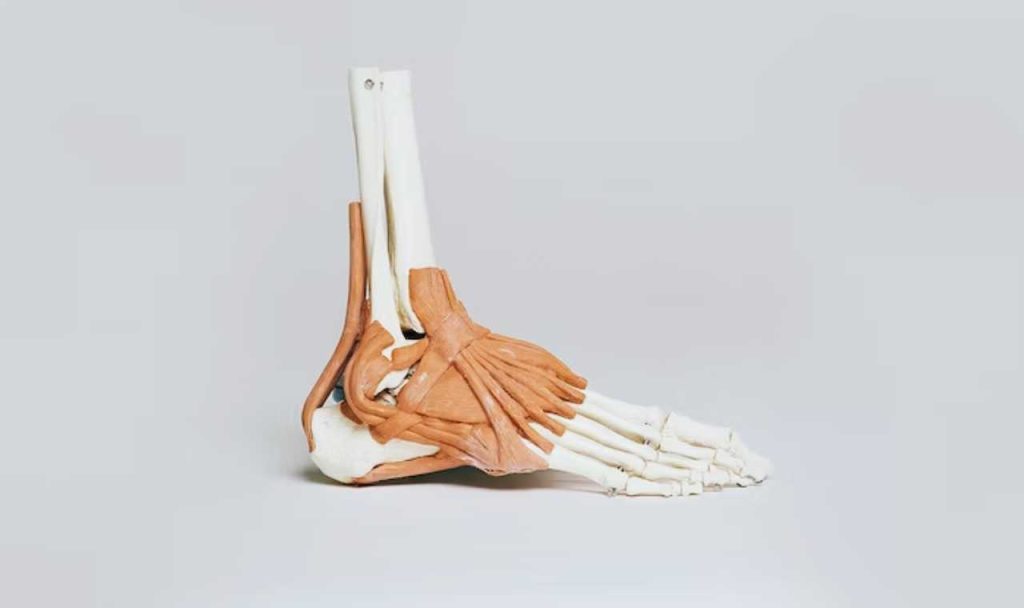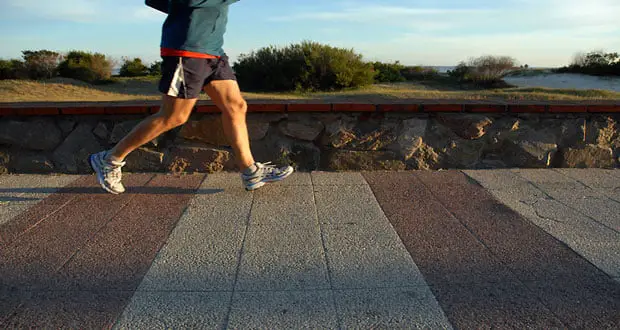Do I Have Wide Feet? – How Do You Tell If You Have Wide Feet?

ListedFit is reader-supported. When you buy through links on our site, we may earn a small commission.
Many experience discomfort in their feet, but they may not realize that their discomfort is due to having wide feet.
Wide feet can be a result of genetics, weight gain, or other factors. Knowing whether you have wide feet is important because it can affect the type of shoes you wear and your overall foot health.
One way to determine if you have wide feet is to start by measuring your foot width. This can be done by tracing your foot on a piece of paper and measuring the widest part of your foot. I have included a video below to help you.
Table of Contents
What Exactly Is A Wide Foot?
Wide feet are feet that are wider than the average foot width. Foot width is the measurement of the widest part of the foot, which is usually the ball of the foot. Wide feet are not uncommon, and many people have them without realizing it.

There are a few different reasons why someone might have wide feet. Some people simply have wider bones in their feet, while others have wider feet due to conditions such as flat feet or plantar fasciitis. Additionally, some people may have wide feet due to weight gain or pregnancy.
It is important to know whether or not you have wide feet, as this can affect the fit of your shoes. Shoes that are too narrow can cause discomfort, blisters, and other more serious foot problems.
To determine if you have wide feet, you can measure your feet at home. Simply stand on a piece of paper and trace the outline of your foot. Then, measure the width of the widest part of your foot. If your foot width is 4 inches or more, then you likely have wide feet.
It is important to note that shoe sizes can vary by brand, so it is always a good idea to try on shoes before purchasing them. Additionally, some brands such as NB offer a good selection of shoes in wide sizes, which can provide a more comfortable fit for those with wider feet.
How Do You Know If You Have Wide Feet?
Determining whether or not you have wide feet is an important step in finding the right shoes that fit comfortably. Here are a few ways to know if you have wide feet:
Have You Measured Your Feet?
The most accurate way to determine if you have wide feet is to measure the width of your feet. You can do this by tracing your feet on a piece of paper and measuring the widest part of your foot with a ruler. If your foot width is greater than the average width for your shoe size, then you may have wide feet.
Do You Often Have Shoe Sizing Problems?
Another way to tell if you have wide feet is to take a look at your shoe size. If you often find that your shoes are too tight or uncomfortable, even if they are the correct length, then you may have wide feet. This is because shoes that are too narrow can cause discomfort and pain.
Using a Shoe Size Chart Always Helps
Consulting a shoe size chart can also be helpful in determining if you have wide feet or if you’re going to need to order a wide shoe.
Sometimes I end up choosing the wide option of a shoe, even though I don’t have particularly wide feet myself.
Many shoe brands offer size charts that include width measurements. New Balance are very good with this.
By comparing your foot width to the shoe size chart, you can determine if you should be looking for shoes with a wider width.
Do You Have Narrow Feet?
It’s also important to note that some people have narrow feet. If you find that shoes are often too loose or slip off your feet, then you may have narrow feet. In this case, you should look for shoes with a narrower width measurement.

Imagine if I told you you’ve been buying the wrong size shoes for your feet for years!
Some people don’t even realise they have wide feet until they try on a wide pair and notice how much more comfortable they feel.
By measuring your feet, and paying attention to shoe size and width measurements, you can find the right shoes that fit comfortably and support your feet.
Do I Have Wide Feet? Signs and Symptoms To Look For
Wide feet are a common issue that many people face. It can be challenging to determine whether or not you actually have wide feet, especially if you have never experienced any discomfort or pain before.
Below are some signs and symptoms to look out for.
Discomfort and Pain
One of the most common signs that you have wide feet is discomfort and pain.
If you experience pain in your feet, especially around the ball of your foot or the arch, it may be an indication that your feet are wider than average.
The pain may also be accompanied by a feeling of tightness or pressure in your feet.
Swelling and Edema
Another sign that you have wide feet is swelling and edema.
If you notice that your feet are swollen or puffy, especially after a long day of standing or walking, it may be a sign that your feet are wider than average.
Edema can cause a lot of discomfort and pain, so it is important to address this issue promptly.
Calluses, Corns, and Bunions
Wide feet can also lead to the development of calluses, corns, and bunions. These are areas of thickened skin that can be painful and unsightly.
Calluses and corns can develop on the bottoms of your feet or on your toes, while bunions are bony bumps that form at the base of your big toe.
Toe Box Issues
If you have wide feet, you may also experience issues with the toe box of your shoes. The toe box is the area of the shoe that surrounds your toes.
If your feet are wider than average, you will probably find that your feet rub against the toe area of your shoes and you probably feel a bit of soreness as well that’s more noticeable when you take the shoes off.
Narrow toe boxes can cause a lot of discomfort and pain.
Blisters and Discoloration
If you do have wide feet, you may be more prone to developing blisters and areas of discolouration on your feet.
Blisters can very easily form when your shoes continuously rub against your skin, while discolouration can be a sign of poor circulation in your feet.
Things That Can Cause Wide Feet

- Genetics
Some people are just born with wide feet due to genetics. Some actually say that if your grandparents have wide feet, there is a higher chance that they will have wide feet as well. - Medical Conditions
Certain medical conditions can cause wide feet, such as edema, which is swelling caused by excess fluid in the body, or lymphedema, which is swelling caused by a blockage in the lymphatic system. - Foot Deformities
Foot deformities such as bunions, hammertoes, and flat feet can cause a person’s feet to become wider than usual.
These conditions can be caused by genetics, improper footwear, or injury. - Wearing Improper Footwear
Wearing shoes that are too narrow or too tight can cause a person’s feet to become wider over time.
Shoes not providing enough support can also cause a person’s feet to spread out. - Flat Arches
People with flat arches are more likely to have wide feet because their feet have less support and are more prone to spreading out. - Inflammation
Inflammation in the feet can cause them to become wider. This can be caused by injury, infection, or arthritis. - Ageing
As a person ages, their feet can become wider due to a loss of elasticity in the tendons and ligaments that support the feet. - Obesity
Being overweight or obese can cause a person’s feet to become wider due to the increased pressure on the feet. - Pregnancy
During pregnancy, a woman’s body produces a hormone called relaxin, which can cause the ligaments in the feet to loosen and the feet to become wider. - Kidney Disease
People with kidney disease may experience swelling in their feet and ankles, which can cause their feet to become wider. - Diabetes
Diabetes can cause nerve damage and poor circulation in the feet, which can lead to swelling and a widening of the feet.
How to Manage Wide Feet
People with wide feet often struggle to find comfortable and well-fitting shoes. However, there are several ways to manage this condition and alleviate discomfort.
Proper Footwear
Wearing the right footwear can make a significant difference in managing wide feet. Look for shoes with a wide toe box, ample arch support, and a low heel. Avoid shoes with pointed toes or high heels, as they can cause pain and discomfort.
Insoles and Orthotic Devices
Insoles and orthotic devices can provide additional support and cushioning for people with wide feet. They can help distribute weight evenly, reduce pressure on the feet, and improve overall comfort.
Insoles can be purchased over the counter, while orthotic devices may require a prescription from a doctor or orthopaedic surgeon.
Shoe Inserts
Shoe inserts, also known as shoe pads or cushions, can be used to adjust the fit of shoes and provide extra support. They can be placed inside the shoe to reduce the amount of space and prevent sliding, or under the foot to provide additional cushioning.
Shoe Store
When shopping for shoes, it’s important to visit a store that specializes in wide-width shoes. These stores have a wider range of sizes and styles, and their staff can provide guidance on finding the right fit. They may also offer custom shoe fittings and modifications.
Orthopedic Surgeon or Doctor
If wide feet are causing significant pain or discomfort, it may be necessary to see a doctor or orthopedic surgeon. They can diagnose any underlying conditions, such as flat feet or plantar fasciitis, and recommend appropriate treatment options.
Cinderella Procedure
In extreme cases, a surgical procedure known as the Cinderella procedure may be recommended. This procedure involves reshaping the bones in the foot to reduce its width and improve overall comfort. However, it is a highly invasive procedure and should only be considered as a last resort.
Frequently Asked Questions
What is the definition of wide feet?
Wide feet are characterized by a larger-than-average foot width. The width of a foot is measured at the ball of the foot, which is the widest part of the foot.
Feet that measure 4 inches or more across the ball of the foot are considered wide.
What are the symptoms of having wide feet?
People with wide feet may experience discomfort or pain when wearing shoes that are too narrow.
They may also have difficulty finding shoes that fit properly. In some cases, people with wide feet may have a higher risk of developing foot problems such as bunions or hammertoes.
How can I measure my foot width accurately?
To measure your foot width accurately, you can use a blank sheet of paper and a ruler.
Measuring your foot length and width using a sheet of paper and a ruler is a simple process that can help you determine your shoe size. Here are the steps:
1. Find a sheet of paper that is large enough to fit your foot on.
Place the sheet of paper on a flat surface, such as a floor or table.
2. Sit down and place your foot flat on the sheet of paper, with your heel touching the edge of the paper.
3. Use a pen or pencil to mark the tip of your longest toe and the back of your heel on the paper.
4. Use the ruler to measure the distance between the two marks you made on the paper. This measurement represents your foot length.
5. To measure your foot width, place the ruler across the widest part of your foot (usually the ball of your foot). Make sure the ruler is flat against the paper, and measure the distance between the two points where the ruler touches the paper.
6. Write down your foot length and width measurements in inches or centimeters.
Use these measurements to determine your shoe size by referring to a shoe size chart.
Are there any specific brands that cater to wide feet?
Yes, there are several shoe brands that cater to wide feet. Some popular brands include New Balance, Brooks, and Asics.
These brands offer a wide range of shoe styles and sizes to accommodate people with wide feet.
Can wearing narrow shoes cause foot problems for people with wide feet?
Wearing shoes that are too narrow can cause foot problems for people with wide feet. It can lead to discomfort, pain, and foot conditions such as bunions or hammertoes.
It is important to choose shoes that fit properly and provide adequate support for your feet.
Author
-
Stuart Patrick is a health and fitness lifestyle journalist who writes for ListedFit.com.
“I've spent a lot of time trying to get in shape and change my body and I realised there are so many untruths in the health and fitness industry that can slow down or stop your progress, so I share my knowledge and experience to help others to cut through the BS.”
Latest entries
 MacaMarch 17, 2024Which is Better: Black or Red Maca? Comparing Benefits and Uses
MacaMarch 17, 2024Which is Better: Black or Red Maca? Comparing Benefits and Uses FitnessFebruary 18, 2024Join the Discount Club Today!
FitnessFebruary 18, 2024Join the Discount Club Today! KitchenFebruary 5, 2024Best Almond Milk-Making Machines 🥛 Cheap vs Expensive?
KitchenFebruary 5, 2024Best Almond Milk-Making Machines 🥛 Cheap vs Expensive? Barefoot ShoesDecember 18, 2023Can Barefoot Shoes Be Bad for You? Exploring the Potential Downsides
Barefoot ShoesDecember 18, 2023Can Barefoot Shoes Be Bad for You? Exploring the Potential Downsides
Affiliates:
This post may contain affiliate links that at no additional cost to you, the site may earn a small commission. We only recommend products we would use ourselves and all opinions expressed on this site are our own.
General Advice:
The information provided in this article is for general informational purposes only. It is not intended as a substitute for professional advice. Always consult with a qualified healthcare professional before starting any new diet, exercise program, or making changes to your health routine.
Accuracy Advice:
While we strive to provide up-to-date and accurate information, the content in this article may not reflect the most current research or medical guidelines. We encourage readers to do further research and consult with professionals for more personalized advice.
Our Recommendations:
The products and services mentioned in any of our articles are recommended based on our independent research and personal experience. We are not sponsored by any company. We aim to suggest products and services we believe are of high quality and could be beneficial to our readers.







